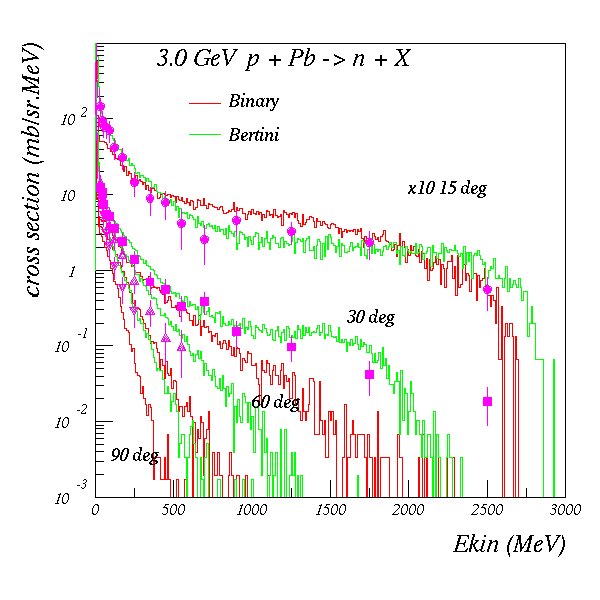A proton beam of 3.0 GeV is incident upon a Pb target. The double-differential neutron cross sections are measured vs. angle and kinetic energy. - Reference: K. Niita et al., Phys. Rev. C52, 2620 (1995).
Simulation Conditions - Geant4 version: 8.1
- Models: Binary, Bertini cascades
Comments - Circular data points: 15 degrees, square: 30 degrees, triangular (pointing up): 60 degrees, triangular (pointing down) 90 degrees
- Predictions of the Binary cascade:
- 15 degrees: below 250 MeV under-estimates by about 30%. Above 250 MeV over-estimates by about 50%
- 30 degrees: good agreement below 500 MeV. Above 500 MeV under-estimates by 30% - 90%. Spectrum also cuts off at too low an energy.
- 60 degrees: under-estimates by 60% or more above 200 MeV
- 90 degrees: under-estimates by 40-80% above 100 MeV
- Predictions of the Bertini cascade:
- 15 degrees: good agreement at all energies
- 30 degrees: over-estimates by 40-50% up to about 1.8 GeV. Spectrumm cuts off at too low an energy
- 60 degrees: over-estimates by about 40%
- 90 degrees: over-estimates by about 50% between 50 and 250 MeV
Summary - The Bertini cascade does a generally better job than the binary cascade of reproducing the neutron spectra, but 40-50% deviations from data are frequent.
Plots  | 